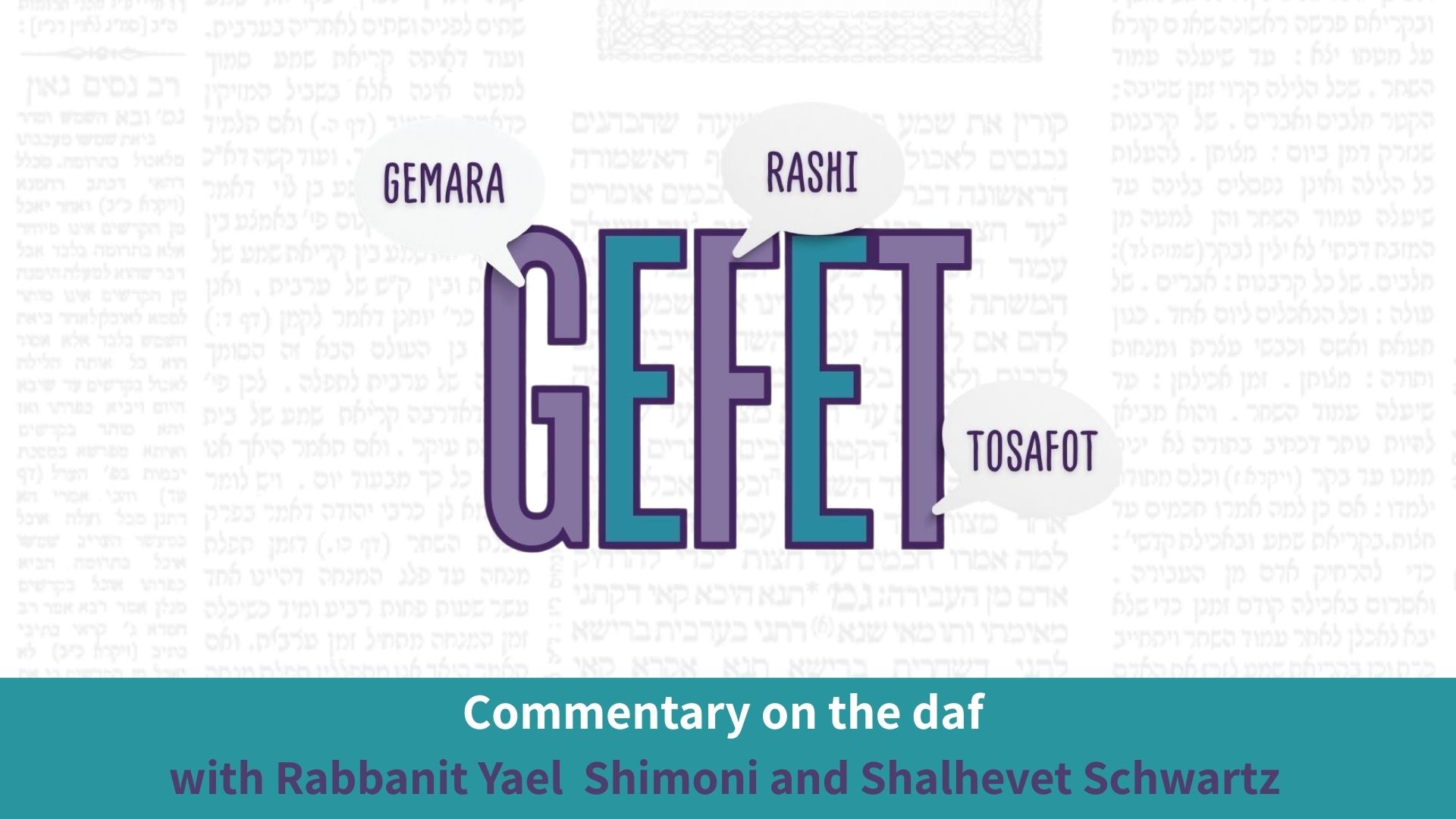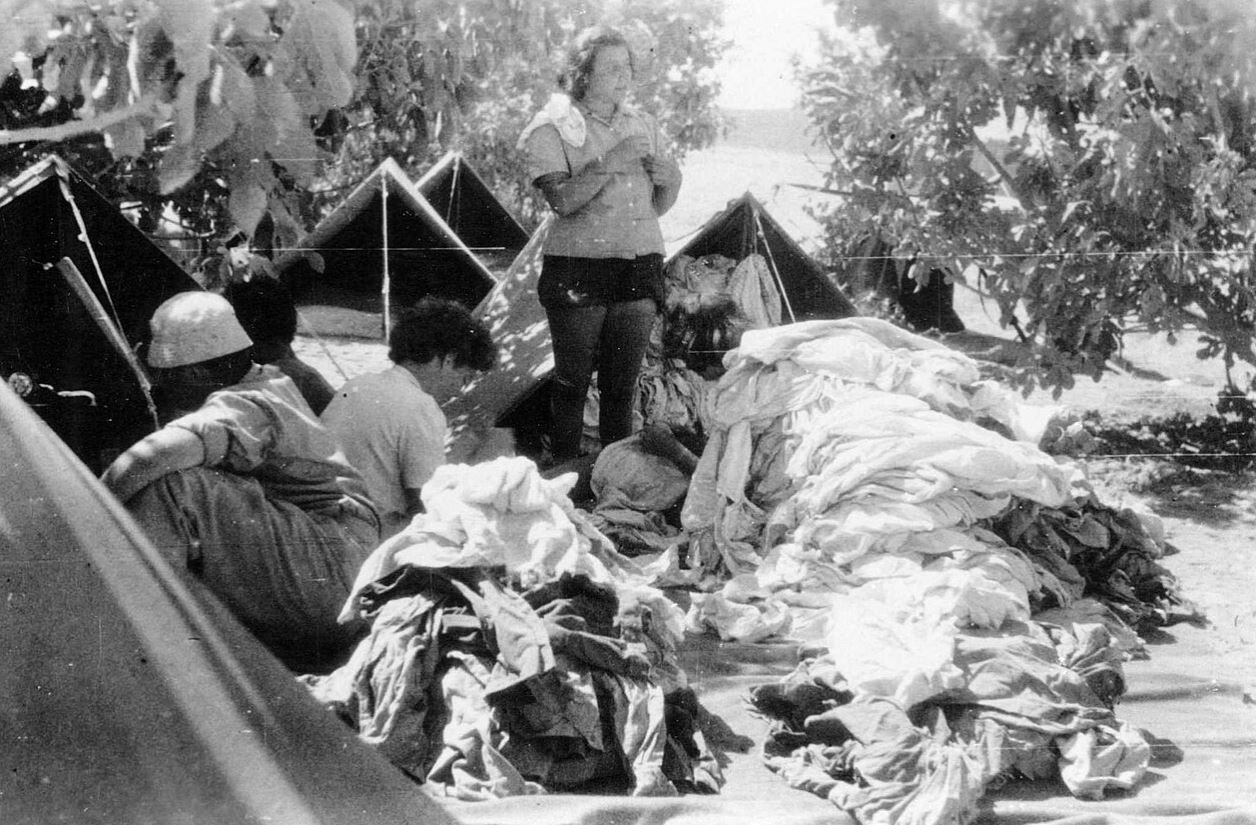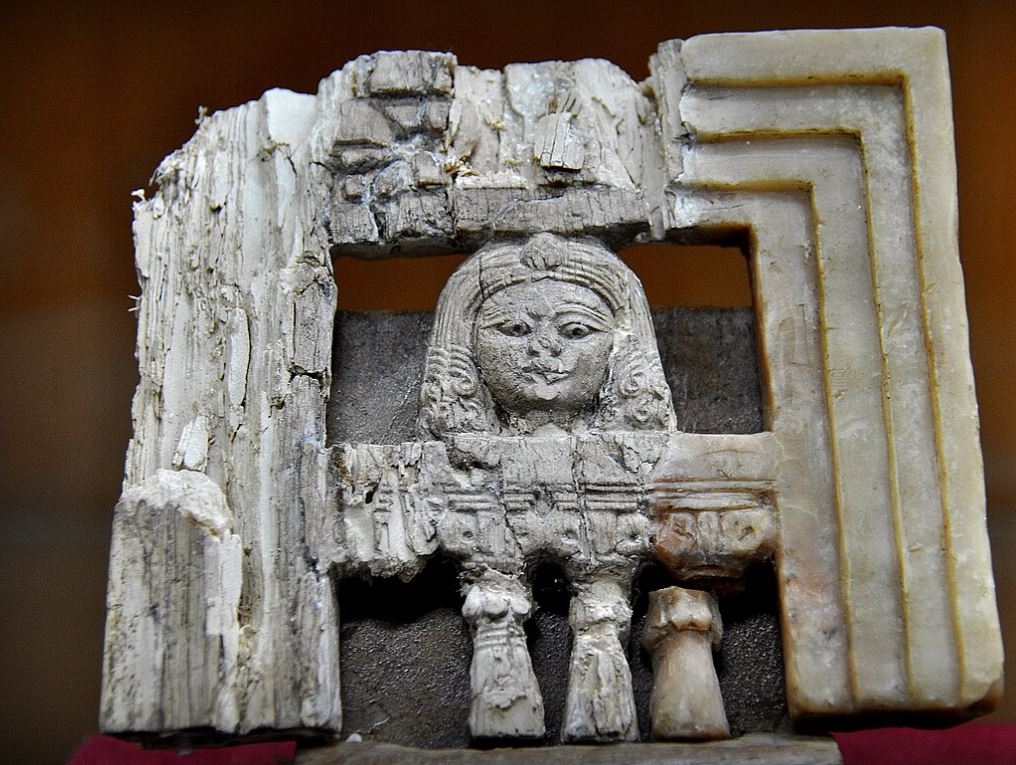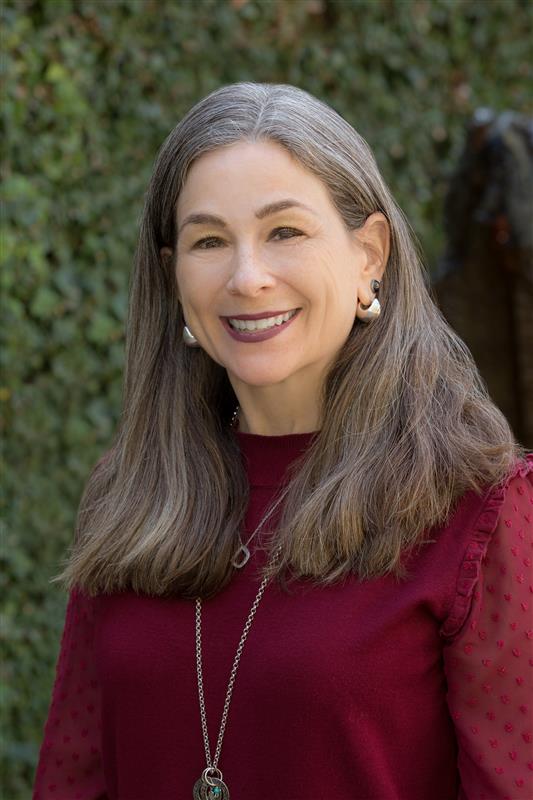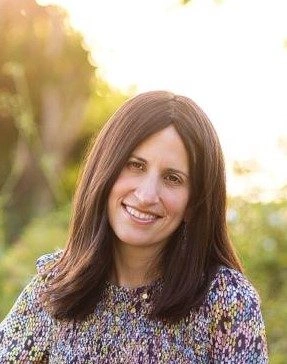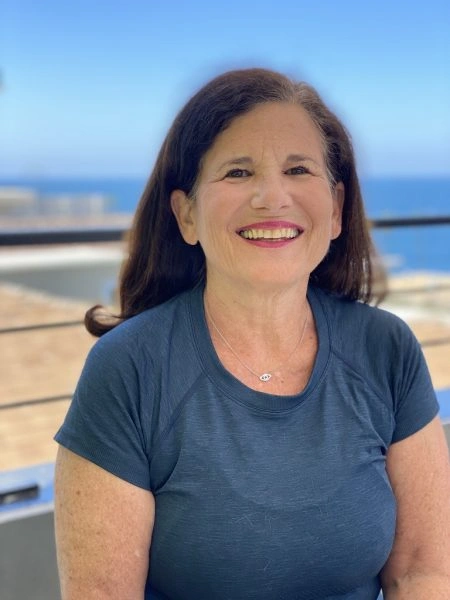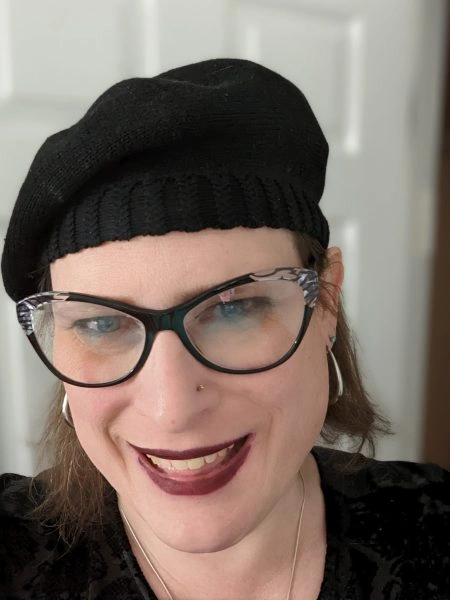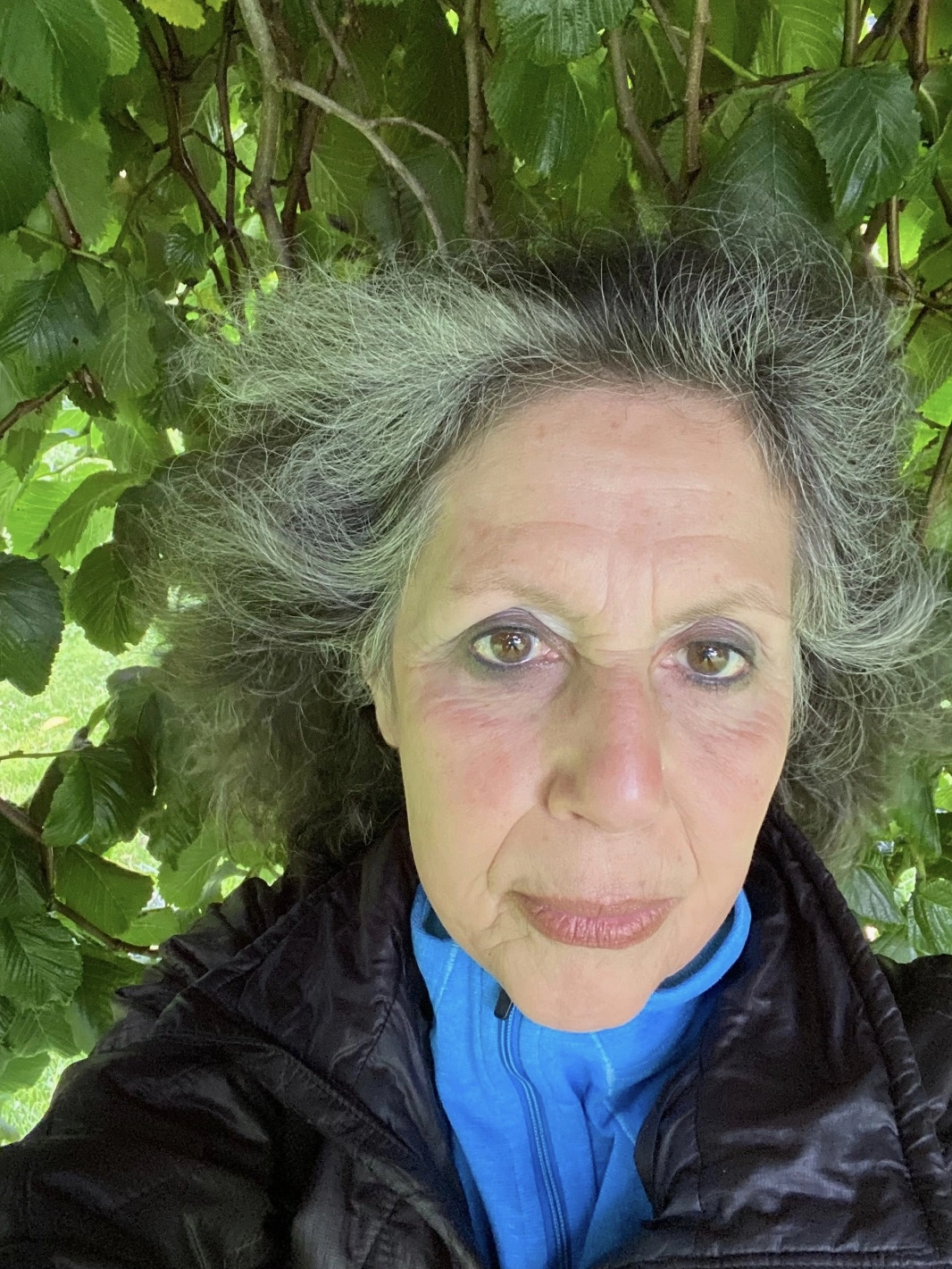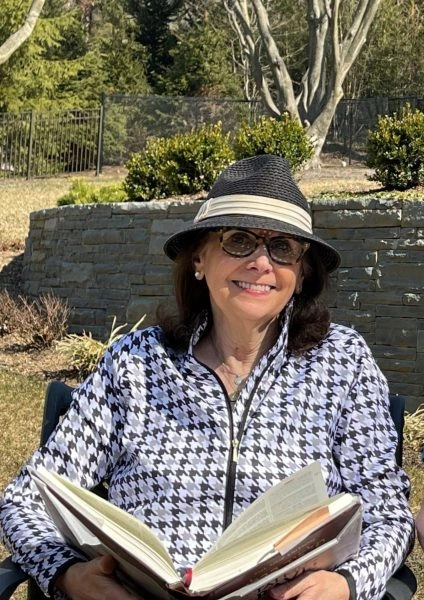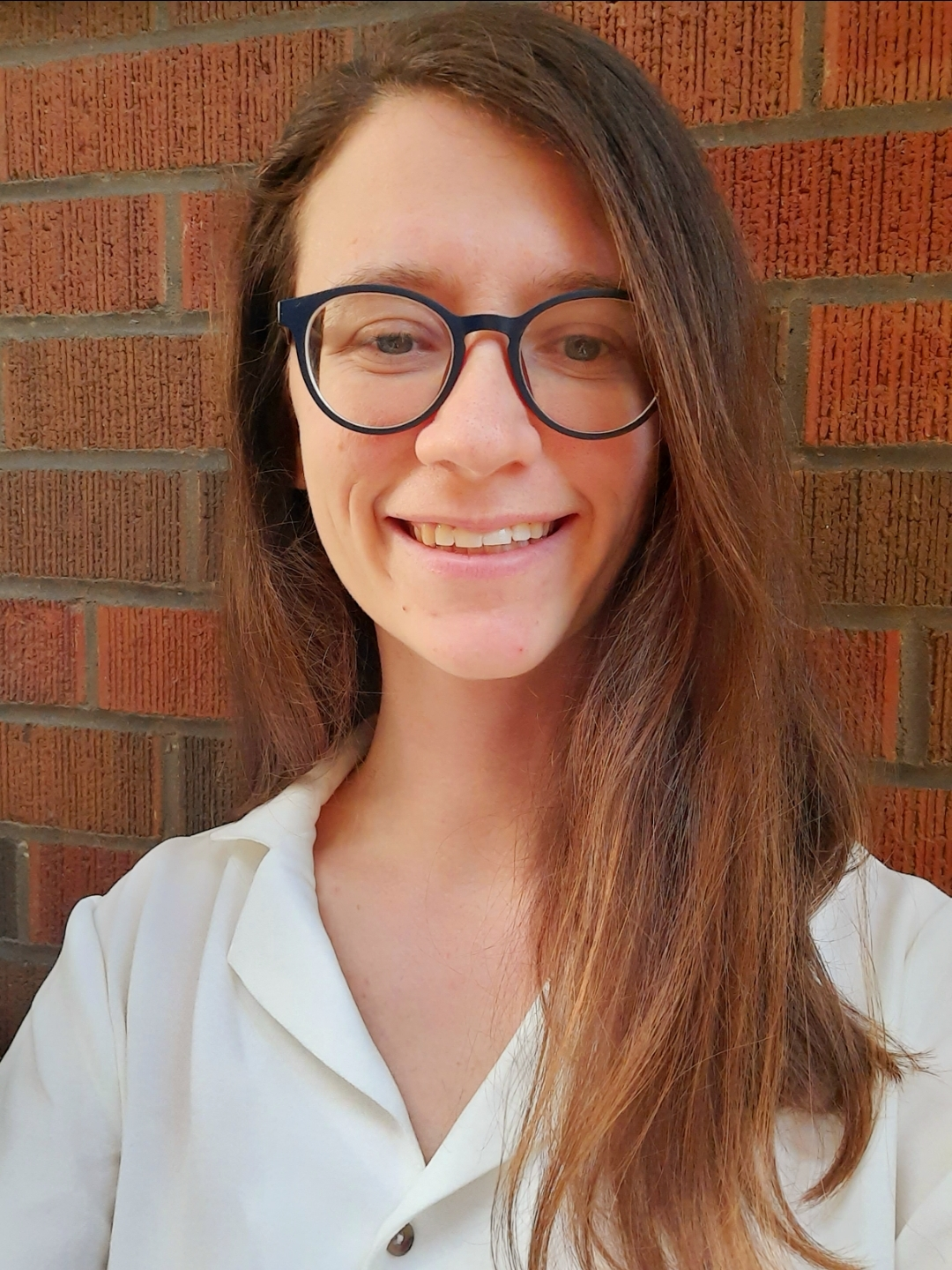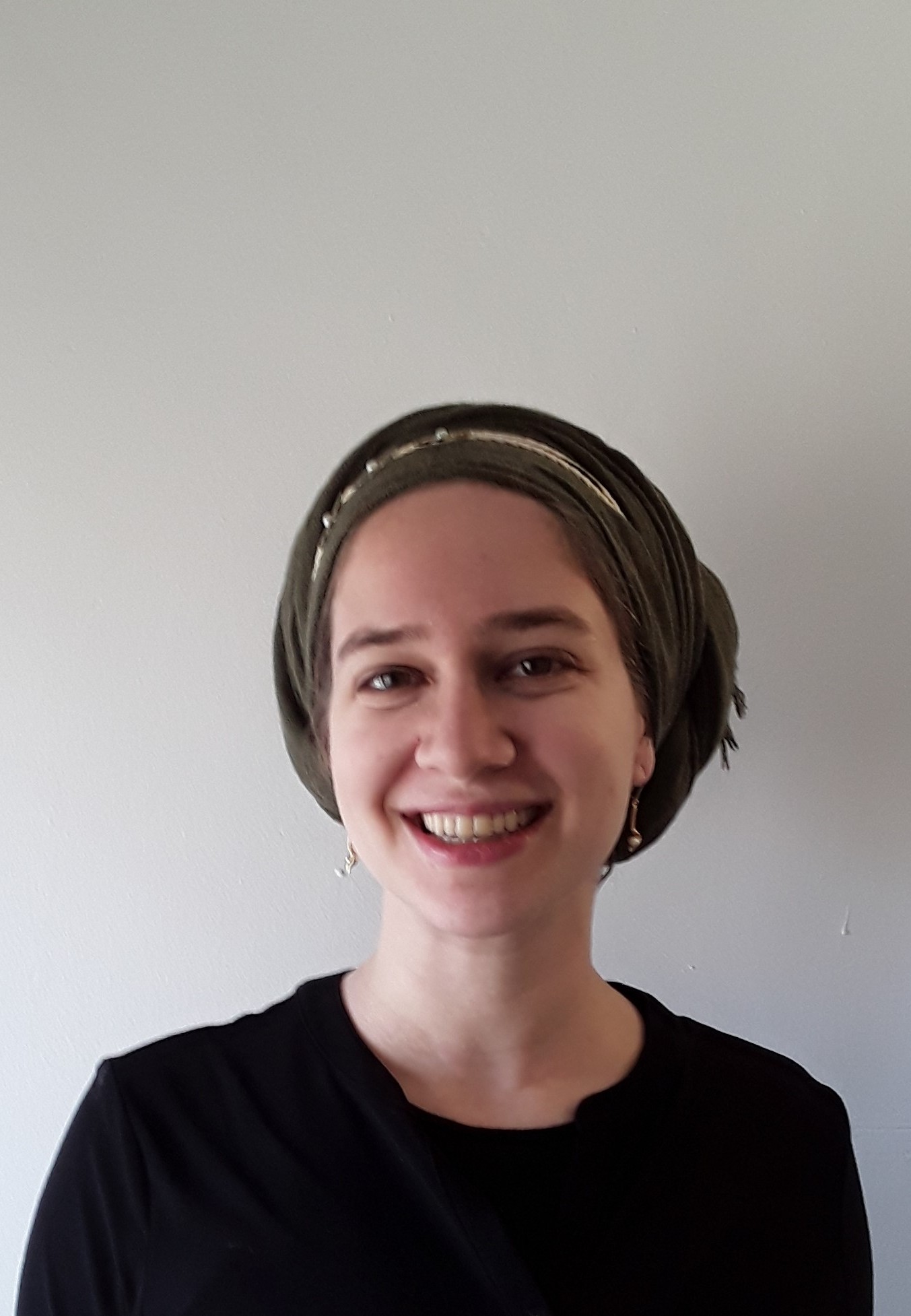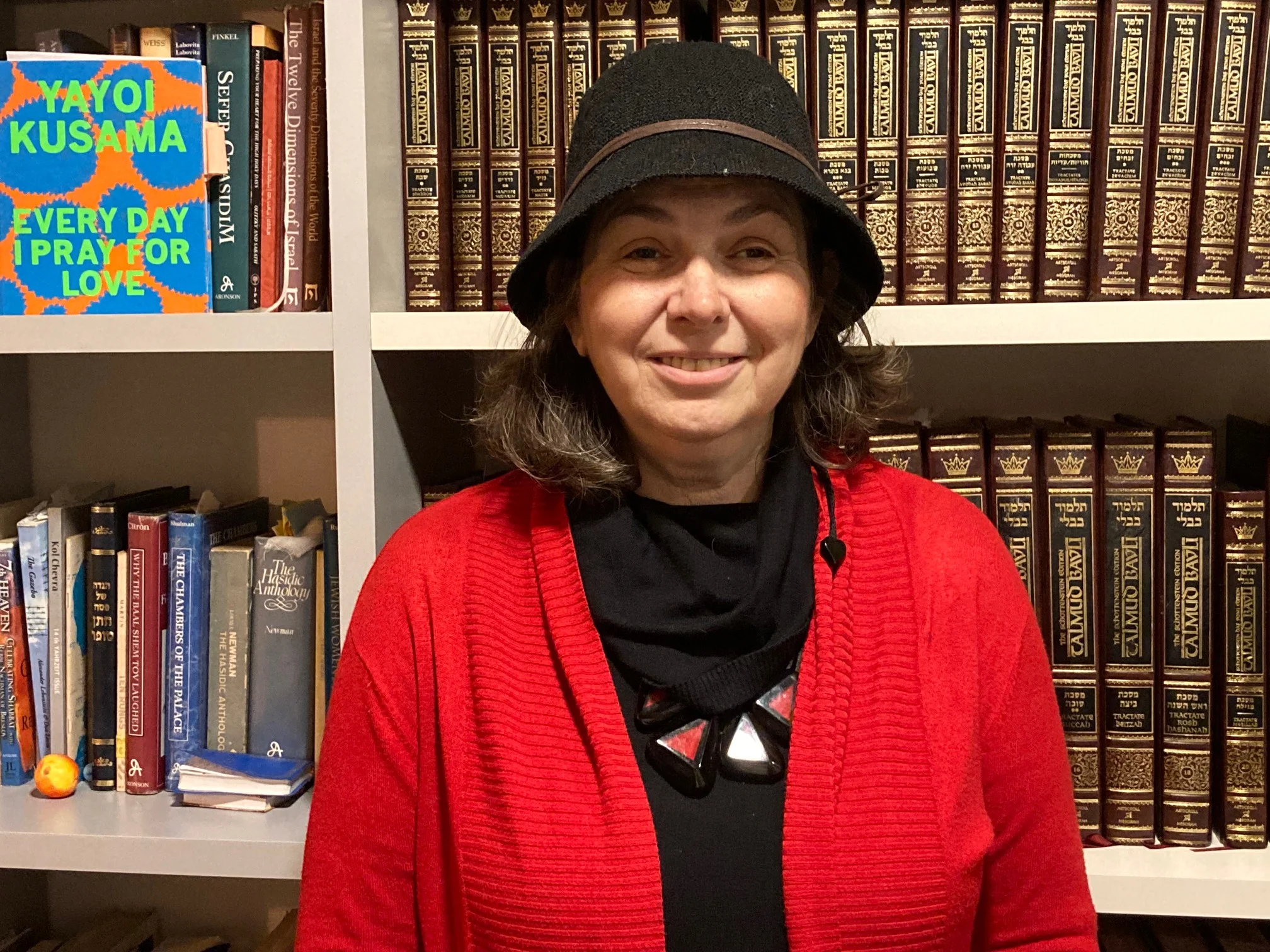Chagigah 3
חַיָּיב בְּשִׂמְחָה. וְאֶת שֶׁאֵינוֹ לֹא שׁוֹמֵעַ וְלֹא מְדַבֵּר, וְשׁוֹטֶה וְקָטָן — פְּטוּרִין אַף מִן הַשִּׂמְחָה, הוֹאִיל וּפְטוּרִין מִכׇּל מִצְוֹת הָאֲמוּרוֹת בַּתּוֹרָה. מַאי שְׁנָא לְעִנְיַן רְאִיָּה דִּפְטִירִי, וּמַאי שְׁנָא לְעִנְיַן שִׂמְחָה דִּמְחַיְּיבִי?
they are obligated in rejoicing. And one who does not hear and does not speak, an imbecile, and a minor are all exempt even from rejoicing, since they are exempt from all the mitzvot mentioned in the Torah. The Gemara asks: What is different with regard to the mitzva of appearance, that a deaf person and a mute are exempt from this mitzva? And what is different with regard to the mitzva of rejoicing, that they are obligated?
לְעִנְיַן רְאִיָּה גָּמַר ״רְאִיָּה״ ״רְאִיָּה״ מֵהַקְהֵל, דִּכְתִיב: ״הַקְהֵל אֶת הָעָם הָאֲנָשִׁים וְהַנָּשִׁים וְהַטַּף״, וּכְתִיב: ״בְּבֹא כׇּל יִשְׂרָאֵל לֵרָאוֹת״.
The Gemara explains: With regard to their exemption from the obligation of appearance, the tanna derives this halakha by means of a verbal analogy between the term appearance stated with regard to the mitzva of appearance at the Temple on the pilgrim Festival and the term appearance stated with regard to the mitzva of assembly, i.e., the obligation to assemble in the Temple on Sukkot in the year following the Sabbatical Year. As it is written, with regard to the mitzva of assembly: “Assemble the people, the men and the women and the little ones” (Deuteronomy 31:12), and it is written in that context: “When all of Israel come to appear” (Deuteronomy 31:11). Just as a deaf person and a mute are not obligated to attend the assembly, they are likewise exempt from appearing in the Temple on the Festivals.
וְהָתָם מְנָלַן? דִּכְתִיב: ״לְמַעַן יִשְׁמְעוּ וּלְמַעַן יִלְמְדוּ״, וְתַנְיָא: ״לְמַעַן יִשְׁמְעוּ״ — פְּרָט לִמְדַבֵּר וְאֵינוֹ שׁוֹמֵעַ, ״וּלְמַעַן יִלְמְדוּ״ — פְּרָט לְשׁוֹמֵעַ וְאֵינוֹ מְדַבֵּר.
The Gemara asks: And there, with regard to the mitzva of assembly, from where do we derive that a deaf person and a mute are exempt? As it is written there: “That they may hear, and that they may learn” (Deuteronomy 31:12), and it is taught in a baraita that the phrase “that they may hear” excludes one who speaks but does not hear; and the phrase “and that they may learn” excludes one who hears but does not speak, as he is unable to learn.
לְמֵימְרָא דְּכִי לָא מִשְׁתַּעֵי לָא גָּמַר? וְהָא הָנְהוּ תְּרֵי אִילְּמֵי דַּהֲווֹ בְּשִׁבָבוּתֵיהּ דְּרַבִּי, בְּנֵי בְרַתֵּיה דְּרַבִּי יוֹחָנָן בֶּן גּוּדְגְּדָא, וְאָמְרִי לַהּ בְּנֵי אֲחָתֵיהּ דְּרַבִּי יוֹחָנָן, דְּכׇל אֵימַת דַּהֲוָה עָיֵיל רַבִּי לְבֵי מִדְרְשָׁא הֲווֹ עָיְילִי וְיָתְבִי קַמַּיְיהוּ וּמְנַיְּידִי בְּרֵישַׁיְיהוּ וּמְרַחֲשִׁין שִׂפְווֹתַיְיהוּ,
The Gemara asks: Is that to say that one who is not able to speak is not able to learn? But consider the following incident. There were two mute people who were in the neighborhood of Rabbi Yehuda HaNasi. They were the sons of the daughter of Rabbi Yoḥanan ben Gudgeda, and some say that they were the sons of the sister of Rabbi Yoḥanan ben Gudgeda. Whenever Rabbi Yehuda HaNasi would enter the study hall they would also enter and sit before the Sages, and they would nod their heads as if they understood and move their lips.
וּבָעֵי רַבִּי רַחֲמֵי עֲלַיְיהוּ וְאִיתַּסּוֹ, וְאִשְׁתַּכַּח דַּהֲווֹ גְּמִירִי הִלְכְתָא וְסִפְרָא וְסִפְרֵי, וְכוּלֵּהּ תַּלְמוּדָא!
And Rabbi Yehuda HaNasi prayed for God to have mercy upon them, and they were healed. And it was discovered that they had learned and were proficient in halakha, i.e., Mishna; Sifra, the halakhic midrash on Leviticus; Sifrei, the halakhic midrash on Numbers and Deuteronomy; and the entire Talmud. This shows that those who cannot speak are able to learn.
אָמַר מָר זוּטְרָא: קְרִי בֵּיהּ ״לְמַעַן יְלַמְּדוּ״. רַב אָשֵׁי אָמַר: וַדַּאי ״לְמַעַן יְלַמְּדוּ״ הוּא, דְּאִי סָלְקָא דַעְתָּךְ ״לְמַעַן יִלְמְדוּ״, וְכֵיוָן דְּלָא מִשְׁתַּעֵי לָא גָּמַר, וְכֵיוָן דְּלָא שָׁמַע לָא גָּמַר,
Mar Zutra said that one should read into the verse: That they may teach [yelamdu], instead of: “That they may learn [yilmedu]” (Deuteronomy 31:12). Even if a mute person is able to learn he cannot teach others. Rav Ashi said that the verse is certainly to be read: That they may teach. As, if it enters your mind that one should read: “That they may learn,” as it is written, and you will explain that since he is not able to speak he is not able to learn, and similarly the reason for the exemption of a deaf person is that since he is not able to hear he is not able to learn, you will have erred. According to this interpretation, it is clear from the context that a deaf person is exempted by the phrase: “That they may hear,” not merely due to his lack of hearing but because his inability to hear prevents him from learning.
הַאי מִ״לְּמַעַן יִשְׁמְעוּ״ נָפְקָא! אֶלָּא וַדַּאי ״לְמַעַן יְלַמְּדוּ״ הוּא.
However, this is incorrect, for if so, this exemption of a mute could also be derived from: “That they may hear,” as the verse has already taught the basic principle that anyone who cannot learn is not obligated in the mitzva of assembly. Rather, the verse is certainly to be read as: “That they may teach,” which indicates that although a mute is able to learn himself, and therefore he is not exempted by the previous verse, he is nevertheless exempt because he is unable to teach others.
אָמַר רַבִּי תַּנְחוּם: חֵרֵשׁ בְּאׇזְנוֹ אַחַת פָּטוּר מִן הָרְאִיָּה, שֶׁנֶּאֱמַר ״בְּאׇזְנֵיהֶם״.
Rabbi Tanḥum said: One who is deaf in one ear is exempt from the mitzva of appearance in the Temple, as it is stated with regard to the mitzva of assembly: “When all Israel comes to appear before the Lord your God in the place that He shall choose, you shall read this law before all Israel in their ears” (Deuteronomy 31:11). This verse indicates that the obligation of assembly applies only to those who can hear with both ears. Since the two mitzvot are connected by verbal analogy, as explained above, this halakha applies to the mitzva of appearance as well.
וְהַאי ״בְּאׇזְנֵיהֶם״ מִבְּעֵי לֵיהּ ״בְּאׇזְנֵיהֶם״ דְּכוּלְּהוּ יִשְׂרָאֵל! הַהוּא מִ״נֶּגֶד כׇּל יִשְׂרָאֵל״ נָפְקָא. אִי מִ״נֶּגֶד כׇּל יִשְׂרָאֵל״, הֲוָה אָמֵינָא: אַף עַל גַּב דְּלָא שָׁמְעִי — כְּתַב רַחֲמָנָא ״בְּאׇזְנֵיהֶם״, וְהוּא דְּשָׁמְעִי.
The Gemara asks: But this phrase: “In their ears,” is necessary to teach that the reading of the Torah at the assembly must enter the ears of the entire Jewish people. Consequently, it cannot serve as the source of the halakha concerning one who is deaf in one ear. The Gemara answers: That halakha, that the reading of the Torah must be heard by the entire Jewish people, is derived from the phrase: “Before all Israel” (Deuteronomy 31:11). The Gemara asks: If that halakha were derived from: “Before all Israel,” I would say that the mitzva applies even though they cannot hear; therefore, the Merciful One writes: “In their ears,” and that indicates that they must be able to hear. If so, this phrase is not available for deriving the halakha of someone who is deaf in one ear.
הָהוּא מִ״לְּמַעַן יִשְׁמְעוּ״ נָפְקָא.
The Gemara answers: That halakha, that the people must hear, is derived from: “That they may hear” (Deuteronomy 31:12). Therefore, the phrase: “In their ears,” is not required for that purpose. Rather, it teaches that only those who can hear with both ears are obligated in the mitzva of assembly, and by extension, in the mitzva of appearance as well.
אָמַר רַבִּי תַּנְחוּם: חִיגֵּר בְּרַגְלוֹ אַחַת — פָּטוּר מִן הָרְאִיָּה, שֶׁנֶּאֱמַר: ״רְגָלִים״.
Rabbi Tanḥum said: One who is lame in one leg is exempt from the mitzva of appearance, as it is stated: “Three times [regalim] shall you keep a feast for Me in the year” (Exodus 23:14).Since the term for feet is raglayim, it can be inferred from here that the obligation to ascend involves the use of both of one’s legs.
וְהָא ״רְגָלִים״ מִבְּעֵי לֵיהּ, פְּרָט לְבַעֲלֵי קַבִּין! הָהוּא מִ״פְּעָמִים״ נָפְקָא, דְּתַנְיָא: ״פְּעָמִים״, אֵין ״פְּעָמִים״ אֶלָּא רְגָלִים, וְכֵן הוּא אוֹמֵר: ״תִּרְמְסֶנָּה רָגֶל רַגְלֵי עָנִי פַּעֲמֵי דַלִּים״. וְאוֹמֵר: ״מַה יָּפוּ פְעָמַיִךְ בַּנְּעָלִים בַּת נָדִיב״.
The Gemara asks: But the term “regalim” is necessary to exclude people with artificial legs. Although these people are capable of walking, as they do not have two natural legs they are exempt from ascending to the Temple. The Gemara responds: That halakha is derived from: “Three occasions [pe’amim] in the year all your males will appear before the Lord God” (Exodus 23:17). The term pe’amim can also mean legs, as it is taught in a baraita, with regard to the term “pe’amim”: Pe’amim means nothing other than legs. And so it says: “The foot shall tread it down, even the feet of the poor and the steps [pa’amei] of the needy” (Isaiah 26:6), and it says: “How beautiful are your feet [fe’amayikh] in sandals, daughter of the prince” (Song of Songs 7:2).
דָּרֵשׁ רָבָא, מַאי דִּכְתִיב: ״מַה יָּפוּ פְעָמַיִךְ בַּנְּעָלִים בַּת נָדִיב״ — כַּמָּה נָאִין רַגְלֵיהֶן שֶׁל יִשְׂרָאֵל בְּשָׁעָה שֶׁעוֹלִין לָרֶגֶל. ״בַּת נָדִיב״ — בִּתּוֹ שֶׁל אַבְרָהָם אָבִינוּ שֶׁנִּקְרָא נָדִיב, שֶׁנֶּאֱמַר: ״נְדִיבֵי עַמִּים נֶאֱסָפוּ עַם אֱלֹהֵי אַבְרָהָם״. ״אֱלֹהֵי אַבְרָהָם״, וְלֹא אֱלֹהֵי יִצְחָק וְיַעֲקֹב? אֶלָּא: ״אֱלֹהֵי אַבְרָהָם״ — שֶׁהָיָה תְּחִילָּה לְגֵרִים.
With regard to the aforementioned verse, Rava taught: What is the meaning of that which is written: “How beautiful are your feet in sandals, daughter of the prince [nadiv]”? How pleasant are the feet [raglehen] of the Jewish people when they ascend to Jerusalem on the pilgrimage Festival [regel]. “Daughter of the prince”: this is referring to the daughter of Abraham our father who is called a prince, as it is stated: “The princes of the peoples are gathered together, the people of the God of Abraham” (Psalms 47:10). The Gemara asks: Is God only “the God of Abraham,” and not the God of Isaac and Jacob? Rather, the verse mentions “the God of Abraham,” as he was the first of the converts. Abraham was the first prince, as all converts who follow in his path are called “the princes of the peoples.”
אָמַר רַב כָּהֲנָא, דָּרֵשׁ רַב נָתָן בַּר מִנְיוֹמֵי מִשּׁוּם רַבִּי תַּנְחוּם: מַאי דִּכְתִיב ״וְהַבּוֹר רֵק אֵין בּוֹ מָיִם״, מִמַּשְׁמַע שֶׁנֶּאֱמַר ״וְהַבּוֹר רֵק״ — אֵינִי יוֹדֵעַ שֶׁאֵין בּוֹ מָיִם? אֶלָּא: מַיִם אֵין בּוֹ, אֲבָל נְחָשִׁים וְעַקְרַבִּים יֵשׁ בּוֹ.
The Gemara cites another statement of Rabbi Tanḥum. Rav Kahana said that Rabbi Natan bar Manyumi taught in the name of Rabbi Tanḥum: What is the meaning of that which is written with regard to Joseph: “And they took him, and cast him into the pit; and the pit was empty, there was no water in it” (Genesis 37:24). By inference from that which is stated: “And the pit was empty,” don’t I know that there was no water in it? Rather, this teaches that there was no water in it, but there were snakes and scorpions in it.
תָּנוּ רַבָּנַן: מַעֲשֶׂה בְּרַבִּי יוֹחָנָן בֶּן בְּרוֹקָה וְרַבִּי אֶלְעָזָר [בֶּן] חִסְמָא שֶׁהָלְכוּ לְהַקְבִּיל פְּנֵי רַבִּי יְהוֹשֻׁעַ בִּפְקִיעִין. אָמַר לָהֶם: מָה חִידּוּשׁ הָיָה בְּבֵית הַמִּדְרָשׁ הַיּוֹם? אָמְרוּ לוֹ: תַּלְמִידֶיךָ אָנוּ וּמֵימֶיךָ אָנוּ שׁוֹתִין. אָמַר לָהֶם: אַף עַל פִּי כֵן, אִי אֶפְשָׁר לְבֵית הַמִּדְרָשׁ בְּלֹא חִידּוּשׁ.
§ The Sages taught: There was an incident involving Rabbi Yoḥanan ben Beroka and Rabbi Elazar ben Ḥisma, when they went to greet Rabbi Yehoshua in Peki’in. Rabbi Yehoshua said to them: What novel idea was taught today in the study hall? They said to him: We are your students and we drink from your water, i.e., all of our Torah knowledge comes from you, and therefore how can we tell you something you have not already learned? He said to them: Even so, there cannot be a study hall without a novelty.
שַׁבָּת שֶׁל מִי הָיְתָה? שַׁבָּת שֶׁל רַבִּי אֶלְעָזָר בֶּן עֲזַרְיָה הָיְתָה. וּבַמֶּה הָיְתָה הַגָּדָה הַיּוֹם? אָמְרוּ לוֹ: בְּפָרָשַׁת הַקְהֵל. וּמָה דָּרַשׁ בָּהּ?
He asked them: Whose week was it, i.e., who was the lecturer this week? They said to him: It was Rabbi Elazar ben Azarya’s week. He inquired: And on what subject was the lecture today? They said to him: He spoke about the portion of the mitzva of assembly. Rabbi Yehoshua persisted: And what verse did he interpret homiletically with regard to this mitzva?
״הַקְהֵל אֶת הָעָם הָאֲנָשִׁים וְהַנָּשִׁים וְהַטַּף״. אִם אֲנָשִׁים בָּאִים לִלְמוֹד, נָשִׁים בָּאוֹת לִשְׁמוֹעַ, טַף לָמָּה בָּאִין? כְּדֵי לִיתֵּן שָׂכָר לִמְבִיאֵיהֶן. אָמַר לָהֶם: מַרְגָּלִית טוֹבָה הָיְתָה בְּיַדְכֶם, וּבִקַּשְׁתֶּם לְאַבְּדָהּ מִמֶּנִּי?
They said to him that Rabbi Elazar ben Azarya interpreted the following verse: “Assemble the people, the men and the women and the little ones” (Deuteronomy 31:12). This verse is puzzling: If men come to learn, and women, who might not understand, come at least to hear, why do the little ones come? They come in order for God to give a reward to those who bring them, i.e., God credits those who bring their children to the assembly. Rabbi Yehoshua said to them: This good pearl of wisdom was in your hands, and you tried to conceal it from me?
וְעוֹד דָּרַשׁ: ״אֶת ה׳ הֶאֱמַרְתָּ הַיּוֹם״, ״וַה׳ הֶאֱמִירְךָ הַיּוֹם״,
Upon seeing that Rabbi Yehoshua was pleased to hear this idea, Rabbi Yoḥanan ben Beroka and Rabbi Elazar ben Ḥisma said to him: Additionally, Rabbi Elazar interpreted the following verses homiletically: “You have affirmed, this day, that the Lord is your God, and that you will walk in His ways and keep His statutes, His mitzvot, and His ordinances, and listen to His voice. And the Lord has affirmed you, this day, to be His treasure, as He promised you, and that you should keep all His mitzvot” (Deuteronomy 26:17–18).
אָמַר לָהֶם הַקָּדוֹשׁ בָּרוּךְ הוּא לְיִשְׂרָאֵל: אַתֶּם עֲשִׂיתוּנִי חֲטִיבָה אַחַת בָּעוֹלָם, וַאֲנִי אֶעֱשֶׂה אֶתְכֶם חֲטִיבָה אַחַת בָּעוֹלָם. אַתֶּם עֲשִׂיתוּנִי חֲטִיבָה אַחַת בָּעוֹלָם, דִּכְתִיב: ״שְׁמַע יִשְׂרָאֵל ה׳ אֱלֹהֵינוּ ה׳ אֶחָד״, וַאֲנִי אֶעֱשֶׂה אֶתְכֶם חֲטִיבָה אַחַת בָּעוֹלָם, שֶׁנֶּאֱמַר:
Rabbi Elazar explained: The Holy One, Blessed be He, said to the Jewish people: You have made Me a single entity in the world, as you singled Me out as separate and unique. And therefore I will make you a single entity in the world, as you will be a treasured nation, chosen by God. You have made Me a single entity in the world, as it is written: “Hear, O Israel, the Lord our God, the Lord is One” (Deuteronomy 6:4). And therefore I will make you a single entity in the world, as it is stated:
״וּמִי כְּעַמְּךָ יִשְׂרָאֵל גּוֹי אֶחָד בָּאָרֶץ״.
“And who is like Your people, Israel, one nation in the land?” (I Chronicles 17:21).
וְאַף הוּא פָּתַח וְדָרַשׁ: ״דִּבְרֵי חֲכָמִים כַּדָּרְבֹנוֹת וּכְמַשְׂמְרוֹת נְטוּעִים בַּעֲלֵי אֲסֻפּוֹת נִתְּנוּ מֵרוֹעֶה אֶחָד״, לָמָּה נִמְשְׁלוּ דִּבְרֵי תוֹרָה לְדָרְבָן? לוֹמַר לָךְ: מָה דָּרְבָן זֶה מְכַוֵּין אֶת הַפָּרָה לִתְלָמֶיהָ לְהוֹצִיא חַיִּים לְעוֹלָם — אַף דִּבְרֵי תוֹרָה מְכַוְּונִין אֶת לוֹמְדֵיהֶן מִדַּרְכֵי מִיתָה לְדַרְכֵי חַיִּים. אִי מָה דָּרְבָן זֶה מִטַּלְטֵל — אַף דִּבְרֵי תוֹרָה מִטַּלְטְלִין, תַּלְמוּד לוֹמַר: ״מַשְׂמְרוֹת״.
The Gemara adds: And Rabbi Elazar ben Azarya also commenced his lecture and taught: It is written: “The words of the wise are as goads, and as nails well fastened are those that are composed in collections; they are given from one shepherd” (Ecclesiastes 12:11). Why are matters of Torah compared to a goad? To tell you that just as this goad directs the cow to her furrow to bring forth sustenance for life to the world, so too the words of Torah direct those who study them from the paths of death to the paths of life. The Gemara asks: If so, derive the following from that same analogy: Just as this goad is movable and not rigid, so too matters of Torah are movable in accordance with circumstance and are not permanent. Therefore, the verse states: “Nails,” which are permanent.
אִי מָה מַסְמֵר זֶה חָסֵר וְלֹא יָתֵר — אַף דִּבְרֵי תוֹרָה חֲסֵירִין וְלֹא יְתֵירִין, תַּלְמוּד לוֹמַר: ״נְטוּעִים״, מָה נְטִיעָה זוֹ פָּרָה וְרָבָה — אַף דִּבְרֵי תוֹרָה פָּרִין וְרָבִין. ״בַּעֲלֵי אֲסֻפּוֹת״ — אֵלּוּ תַּלְמִידֵי חֲכָמִים, שֶׁיּוֹשְׁבִין אֲסוּפּוֹת אֲסוּפּוֹת וְעוֹסְקִין בַּתּוֹרָה. הַלָּלוּ מְטַמְּאִין וְהַלָּלוּ מְטַהֲרִין, הַלָּלוּ אוֹסְרִין וְהַלָּלוּ מַתִּירִין, הַלָּלוּ פּוֹסְלִין וְהַלָּלוּ מַכְשִׁירִין,
The Gemara further asks: If so, one can explain as follows: Just as this nail is diminished in size and does not expand, as it wastes away over time, so too matters of Torah are gradually diminished and do not expand. Therefore, the verse states: “Well fastened [netuim].” Just as this plant [neti’a] flourishes and multiplies, so too matters of Torah flourish and multiply. “Those that are composed in collections [ba’alei asufot]”: These are Torah scholars who sit in many groups [asupot] and engage in Torah study. There are often debates among these groups, as some of these Sages render an object or person ritually impure and these render it pure; these prohibit an action and these permit it; these deem an item invalid and these deem it valid.
שֶׁמָּא יֹאמַר אָדָם: הֵיאַךְ אֲנִי לָמֵד תּוֹרָה מֵעַתָּה — תַּלְמוּד לוֹמַר: ״כּוּלָּם נִתְּנוּ מֵרוֹעֶה אֶחָד״. אֵל אֶחָד נְתָנָן, פַּרְנָס אֶחָד אֲמָרָן, מִפִּי אֲדוֹן כׇּל הַמַּעֲשִׂים בָּרוּךְ הוּא, דִּכְתִיב: ״וַיְדַבֵּר אֱלֹהִים אֶת כׇּל הַדְּבָרִים הָאֵלֶּה״.
Lest a person say: Now, how can I study Torah when it contains so many different opinions? The verse states that they are all “given from one shepherd.” One God gave them; one leader, i.e., Moses, said them from the mouth of the Master of all creation, Blessed be He, as it is written: “And God spoke all these words” (Exodus 20:1). The plural form “words” indicates that God transmitted all the interpretations of the Ten Commandments. Since the Sages invariably utilize the Torah itself or the statements of the prophets as the sources for their opinions, there is a certain unity to the study of Torah, despite the numerous explanations and applications.
אַף אַתָּה, עֲשֵׂה אׇזְנֶיךָ כַּאֲפַרְכֶּסֶת, וּקְנֵה לְךָ לֵב מֵבִין לִשְׁמוֹעַ אֶת דִּבְרֵי מְטַמְּאִים וְאֶת דִּבְרֵי מְטַהֲרִים, אֶת דִּבְרֵי אוֹסְרִין וְאֶת דִּבְרֵי מַתִּירִין, אֶת דִּבְרֵי פוֹסְלִין וְאֶת דִּבְרֵי מַכְשִׁירִין. בַּלָּשׁוֹן הַזֶּה אָמַר לָהֶם: אֵין דּוֹר יָתוֹם שֶׁרַבִּי אֶלְעָזָר בֶּן עֲזַרְיָה שָׁרוּי בְּתוֹכוֹ.
So too you, the student, make your ears like a funnel and acquire for yourself an understanding heart to hear both the statements of those who render objects ritually impure and the statements of those who render them pure; the statements of those who prohibit actions and the statements of those who permit them; the statements of those who deem items invalid and the statements of those who deem them valid. When Rabbi Yehoshua heard these interpretations, he said to them in these words: No generation is considered orphaned, i.e. without a leader, if Rabbi Elazar ben Azarya dwells among it.
וְלֵימְרוּ לֵיהּ בְּהֶדְיָא? מִשּׁוּם מַעֲשֶׂה שֶׁהָיָה. דְּתַנְיָא: מַעֲשֶׂה בְּרַבִּי יוֹסֵי בֶּן דּוֹרְמַסְקִית שֶׁהָלַךְ לְהַקְבִּיל פְּנֵי רַבִּי (אֶלְעָזָר) [אֱלִיעֶזֶר] בְּלוֹד, אָמַר לוֹ: מָה חִידּוּשׁ הָיָה בְּבֵית הַמִּדְרָשׁ הַיּוֹם?
The Gemara asks: But Rabbi Yoḥanan ben Beroka and Rabbi Elazar ben Ḥisma should have told Rabbi Yehoshua these statements of Rabbi Elazar ben Azarya directly, without delay. Why did they hesitate at first? The Gemara answers: They were hesitant due to an incident that occurred. As it is taught in a baraita: There was an incident involving Rabbi Yosei ben Durmaskit, who went to greet Rabbi Eliezer in Lod. Rabbi Elazar said to him: What novel idea was taught today in the study hall?
אֲמַר לֵיהּ, נִמְנוּ וְגָמְרוּ: עַמּוֹן וּמוֹאָב מְעַשְּׂרִין מַעְשַׂר עָנִי בַּשְּׁבִיעִית.
Rabbi Yosei ben Durmaskit said to him: The Sages assembled, counted the votes, and concluded that although the lands of Ammon and Moab on the eastern side of the Jordan River are not part of Eretz Yisrael, and therefore the halakhot of the Sabbatical Year and tithes should not apply to them, as these lands are adjacent to Eretz Yisrael, one separates the poor man’s tithe there in the Sabbatical Year. Since the Sages debated which tithes should be separated, they had to take a vote to determine the halakha in this regard.
אָמַר לוֹ: יוֹסֵי, פְּשׁוֹט יָדֶיךָ וְקַבֵּל עֵינֶיךָ. פָּשַׁט יָדָיו וְקִבֵּל עֵינָיו. בָּכָה רַבִּי אֶלְעָזָר וְאָמַר: ״סוֹד ה׳ לִירֵאָיו וּבְרִיתוֹ לְהוֹדִיעָם״.
Rabbi Elazar said to him in anger: Yosei, extend your hands and catch your eyes, which are about to come out of their sockets. He extended his hands and caught his eyes. Rabbi Elazar wept and said the verse: “The counsel of the Lord is with them who fear Him; and His covenant, to make them know it” (Psalms 25:14), i.e., the Sages arrived at the correct conclusion, although they were unaware of the proper rationale behind it.
אָמַר לוֹ, לֵךְ אֱמוֹר לָהֶם: אַל תָּחוּשׁוּ לְמִנְיַינְכֶם, כָּךְ מְקּוּבְּלַנִי מֵרַבָּן יוֹחָנָן בֶּן זַכַּאי, שֶׁשָּׁמַע מֵרַבּוֹ וְרַבּוֹ מֵרַבּוֹ: הִלְכְתָא לְמֹשֶׁה מִסִּינַי, עַמּוֹן וּמוֹאָב מְעַשְּׂרִין מַעְשַׂר עָנִי בַּשְּׁבִיעִית. מָה טַעַם — הַרְבֵּה כְּרַכִּים כָּבְשׁוּ עוֹלֵי מִצְרַיִם וְלֹא כְּבָשׁוּם עוֹלֵי בָּבֶל,
Rabbi Elazar said to Rabbi Yosei to go and say to the Sages in the study hall: Do not be concerned with regard to your counting, that you might not have ruled properly, as you have not in fact instituted a new ordinance at all. This is the tradition that I received from Rabban Yoḥanan ben Zakkai, who heard from his teacher, and his teacher from his teacher: It is a halakha transmitted to Moses from Sinai that in Ammon and Moab one separates the poor man’s tithe in the Sabbatical Year. What is the reason? Those who ascended from Egypt conquered many cities, and those who ascended from Babylonia did not conquer them after the destruction of the First Temple.
מִפְּנֵי שֶׁקְּדוּשָּׁה רִאשׁוֹנָה קִדְּשָׁה לִשְׁעָתָהּ וְלֹא קִדְּשָׁה לְעָתִיד לָבֹא, וְהִנִּיחוּם כְּדֵי שֶׁיִּסְמְכוּ עֲלֵיהֶן עֲנִיִּים בַּשְּׁבִיעִית.
This difference is important, because the first consecration of Eretz Yisrael, by those who ascended from Egypt, caused it to be sanctified only for its time and it was not sanctified forever, as that depended on the renewed conquest of the land by the Jewish people. And those who ascended from Babylonia left those cities aside and did not consider them part of Eretz Yisrael even after Jewish settlement was renewed there. They would plow and harvest in these places in the Sabbatical Year and tithe the poor man’s tithe, so that the poor of Eretz Yisrael, who did not have sufficient income from the previous years, could rely upon that produce in the Sabbatical Year, receiving help from this tithe.
תָּנָא: לְאַחַר שֶׁנִּתְיַישְּׁבָה דַּעְתּוֹ, אָמַר: יְהִי רָצוֹן שֶׁיַּחְזְרוּ עֵינֵי יוֹסֵי לִמְקוֹמָן, וְחָזְרוּ.
It was taught that after Rabbi Elazar’s mind was put at ease, he said: May it be God’s will that Rabbi Yosei’s eyes should return to their place. And indeed his eyes returned. Due to this event, in which Rabbi Elazar responded harshly when his disciple related what he considered a novel idea, the students of Rabbi Yehoshua hesitated to recount what they had heard until their teacher encouraged them to do so.
תָּנוּ רַבָּנַן: אֵיזֶהוּ שׁוֹטֶה? הַיּוֹצֵא יְחִידִי בַּלַּיְלָה, וְהַלָּן בְּבֵית הַקְּבָרוֹת, וְהַמְקָרֵעַ אֶת כְּסוּתוֹ. אִיתְּמַר, רַב הוּנָא אָמַר: עַד שֶׁיְּהוּ כּוּלָּן בְּבַת אַחַת, רַבִּי יוֹחָנָן אָמַר: אֲפִילּוּ בְּאַחַת מֵהֶן.
§ The Sages taught: Who is considered an imbecile? One who goes out alone at night, and one who sleeps in a cemetery, and one who rends his garment. It was stated that Rav Huna said: One does not have the halakhic status of an imbecile until there are all of these signs present in him at the same time. Rabbi Yoḥanan said: He is considered an imbecile even due to the appearance of one of these signs.
הֵיכִי דָמֵי? אִי דְּעָבֵיד לְהוּ דֶּרֶךְ שְׁטוּת — אֲפִילּוּ בַּחֲדָא נָמֵי, אִי דְּלָא עָבֵיד לְהוּ דֶּרֶךְ שְׁטוּת — אֲפִילּוּ כּוּלְּהוּ נָמֵי לָא.
The Gemara asks: What are the circumstances of the case under discussion? If he performs them in a deranged manner, then even the appearance of one sign should be enough to classify him as an imbecile. If he does not perform these actions in a deranged manner, but has a reason to act this way, then even if he performs all of them he should not be deemed an imbecile.
לְעוֹלָם דְּקָא עָבֵיד לְהוּ דֶּרֶךְ שְׁטוּת, וְהַלָּן בְּבֵית הַקְּבָרוֹת — אֵימוֹר כְּדֵי שֶׁתִּשְׁרֶה עָלָיו רוּחַ טוּמְאָה הוּא דְּקָא עָבֵיד. וְהַיּוֹצֵא יְחִידִי בַּלַּיְלָה — אֵימוֹר גַּנְדְּרִיפַס אַחְדֵּיהּ, וְהַמְקָרֵעַ אֶת כְּסוּתוֹ — אֵימוֹר בַּעַל מַחְשָׁבוֹת הוּא, כֵּיוָן דְּעַבְדִינְהוּ לְכוּלְּהוּ, הָוֵה לְהוּ
The Gemara answers: Actually, the baraita is referring to one who performs these actions in a deranged manner, but each action on its own could be explained rationally. With regard to one who sleeps in the cemetery, one could say that he is doing so in order that an impure spirit should settle upon him. Although it is inappropriate to do this, as there is a reason for this behavior it is not a sign of madness. And with regard to one who goes out alone at night, one could say that perhaps a fever took hold of him and he is trying to cool himself down. And as for one who tears his garments, one could say that he is a man engaged in thought, and out of anxiety he tears his clothing unintentionally. Despite these possible explanations, since one performed all of these together they are considered




